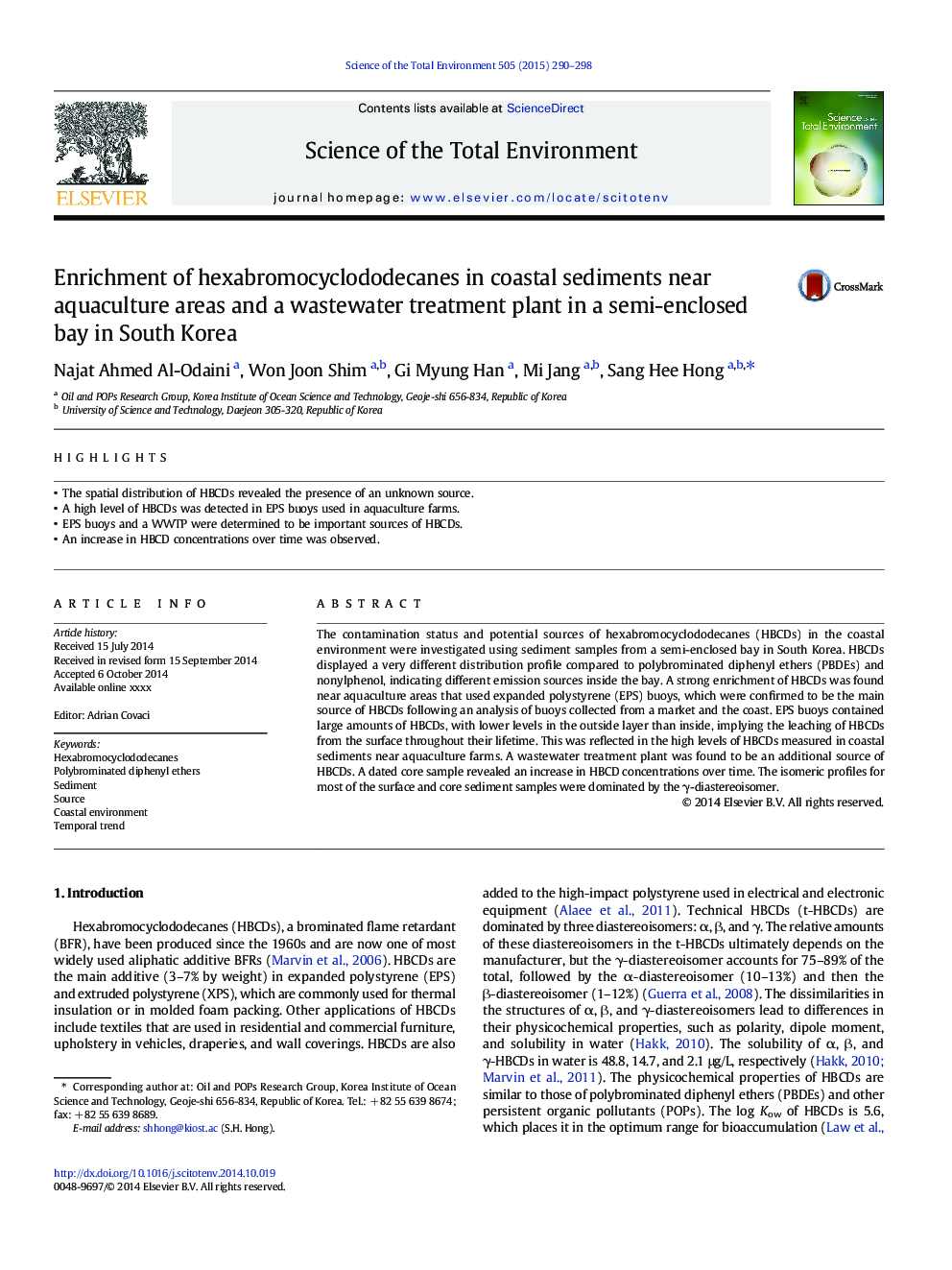| Article ID | Journal | Published Year | Pages | File Type |
|---|---|---|---|---|
| 6328014 | Science of The Total Environment | 2015 | 9 Pages |
Abstract
The contamination status and potential sources of hexabromocyclododecanes (HBCDs) in the coastal environment were investigated using sediment samples from a semi-enclosed bay in South Korea. HBCDs displayed a very different distribution profile compared to polybrominated diphenyl ethers (PBDEs) and nonylphenol, indicating different emission sources inside the bay. A strong enrichment of HBCDs was found near aquaculture areas that used expanded polystyrene (EPS) buoys, which were confirmed to be the main source of HBCDs following an analysis of buoys collected from a market and the coast. EPS buoys contained large amounts of HBCDs, with lower levels in the outside layer than inside, implying the leaching of HBCDs from the surface throughout their lifetime. This was reflected in the high levels of HBCDs measured in coastal sediments near aquaculture farms. A wastewater treatment plant was found to be an additional source of HBCDs. A dated core sample revealed an increase in HBCD concentrations over time. The isomeric profiles for most of the surface and core sediment samples were dominated by the γ-diastereoisomer.
Keywords
Related Topics
Life Sciences
Environmental Science
Environmental Chemistry
Authors
Najat Ahmed Al-Odaini, Won Joon Shim, Gi Myung Han, Mi Jang, Sang Hee Hong,
